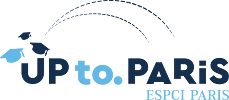The purpose of this project is to study a surface wave absorbing system with potential for both coastal erosion control and renewable energy production. The system is inspired by the fluid flow calming effects of aquatic vegetation in near-shore and riverine environments. The system consists of an ensemble of flexible slender structures mimicking an underwater canopy whose collective dynamics is forced by the action of the waves. The reconfiguration of slender structures by their interaction with an external flow has been a vibrant subject of research in the past decade, and applications abound in this archetype of interdisciplinary subject where biology, physics and engineering meet. Those problems stem from purely biological questions such as the mechanics of plants in the wind or underwater vegetation, to bio-inspired engineering solutions for problems as diverse as mooring and riser systems or eolian energy conversion. But very few studies have focused on such flexible systems for wave energy conversion.
The core of the present project is the mechanical energy conversion inherent to the deformation of a flexible structure: as a deformable structure bends under the action of an external flow, it converts part of the kinetic energy of the surrounding fluid into elastic energy. From an erosion control point of view, the energy absorbed by such an elastic mechanism is thus removed from the energy available in a given flow field to erode the littoral, even if it is given back to the fluid through disordered smaller scale vortical motions during the subsequent relaxation of the elastic structure. An ongoing study at the PMMH laboratory at ESPCI Paris has focused on the dynamics of such fluid-structure interaction mechanisms, in particular studying the effect of the canopy geometrical parameters on the surface wave attenuation properties. We propose in the present PhD project to examine the possible methods for harvesting part of this energy, which would otherwise be dissipated. Candidates at the laboratory scale are piezo-electric systems that we currently testing, but the goal of the proposed project is to examine other technologies such as electroactive polymer membranes that can be scaled up to a realistic application. Coupling energy harvesting to the dissipation of incoming ocean wave energy within a single mechanical system inspired from a field of rooted aquatic vegetation is the keystone of the present proposal.
Keywords
Ocean wave energy, biomimetics, bio-inspiration, fluid-structure interaction, fluid dynamics, energy conversion, renewable energy
Research unit
UMR7636 Physics & Mechanics of Heterogeneous Media
Description of the research Unit/subunit
The PMMH is a multidisciplinary research laboratory dedicated to hydrodynamics, solid mechanics and granular materials, including several soft matter and biophysics themes at the interface with biology and chemistry. It belongs to ESPCI Paris (and thus to PSL Research University) and is also affiliated to CNRS (UMR 7636) and to Sorbonne Univesité (formerly UPMC) and Université Sorbonne Paris Cité (through Université Paris Diderot)*. The Biomimetics and Fluid-Structure Interaction group at PMMH has been working for a few years in the physics of bio-inspired locomotion at intermediate Reynolds numbers such as flapping flight and undulatory swimming. Recently, the team has broadened its scope of research beyond bio-locomotion and into the domain of energy transfers and renewable energies.
*If you happen to come to France you will get used to the confusing institutional landscape exemplified by this sentence… But things end up working well.
Name of the supervisor
Ramiro Godoy-Diana (ramiro.godoy-diana@espci.fr)
Name of the co-supervisor
Benjamin Thiria (benjamin.thiria@espci.fr)
Gaële Perret
3i Aspects of the proposal
The system that we propose to study in the present project concerns renewable energy harvesting and coastal management, issues identified in the European priority axis “2020 Energy Strategy”. Small scale tests that prove the potential of wave energy absorption by an artificial canopy have already given promising preliminary results in the 1:20 scale conceived in our team (our first PhD student on the subject defended her thesis in October 2018) and it is now the moment for the in-depth study of the energy conversion system planned in the present project.
Through this 3-year program, we aim at giving a complete description of this bio-inspired energy controller and haverster. Bioinspiration is an intrinsically interdisciplinary concept, and looking at biological systems with an engineer’s eye has been repeatedly proven a source of technological and scientific breakthroughs.
In addition to the sole inspiration from the wave dissipation properties of aquatic vegetation that has motivated this project, we attempt to continue the discussion with biological oceanographers and limnologists concerning the environmental effects of a coastal management implementation of the system that we propose here. The present project will be conducted in collaboration with colleagues from Université du Havre, where larger scale experiments will be conducted. Finally, we have also included the ocean energy conversion theme in the international collaboration efforts of our team with the Faculty of Engineering of Buenos Aires University (UBA) in Argentina, and with the Mechanical Engineering Department of Georgia Tech (Atlanta, USA).
Expected Profile of the candidate
We attempt to recruit a highly motivated PhD student with an appetite for interdisciplinary work and laboratory experiments in a project that will involve discussing with physicists, biologists, engineers and technical staff in different sites. The ideal candidate should have a degree in Mechanical/Electrical Engineering, Physical Engineering, or Physics. Experimental skills in fluid mechanics (particle image velocimetry, flow visualization) and electric circuits will be appreciated.
Important dates
Call for applications : from February 1st to March 31st 2019
Eligibility check results : Mid April
3i Committee evaluation results : Mid May
Interviews from the shortlisted candidates with the Selection Committee : Late June-Early July
Final results : Mid July
